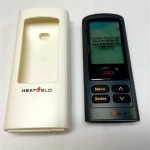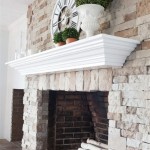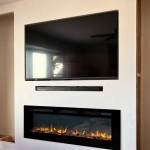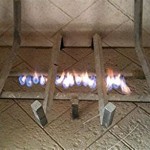Is It Safe To Put a TV Above a Gas Fireplace?
The question of mounting a television above a gas fireplace frequently arises in interior design and home renovation projects. The aesthetic appeal of this arrangement is undeniable; it consolidates entertainment and focal points within a room, creating a visually pleasing and space-saving design. However, the feasibility and safety of this configuration warrant careful consideration, due to the potential for heat damage to the television and the implications for its long-term functionality.
The primary concern revolves around the heat generated by the gas fireplace. While modern gas fireplaces are designed with safety features, they still produce significant heat that can radiate upwards. Televisions are electronic devices sensitive to temperature fluctuations. Excessive heat exposure can damage internal components, shorten the lifespan of the display, and potentially lead to premature failure. Therefore, a thorough evaluation of the fireplace's heat output and the television's heat tolerance is paramount before proceeding with such an installation.
The installation process itself also presents challenges. Proper mounting of both the fireplace and the television, ensuring adequate ventilation, and managing the wiring are crucial for safety and functionality. Ignoring these aspects can lead to fire hazards, unstable mounting, and compromised picture quality.
Understanding Heat Output and Television Tolerance
The heat generated by a gas fireplace is measured in British Thermal Units (BTUs). This measurement indicates the amount of heat the fireplace can produce per hour. Lower BTU fireplaces produce less heat and are generally considered safer for installations where heat-sensitive equipment is nearby. However, even with lower BTU fireplaces, precautions are still necessary.
The fireplace's manual typically specifies the clearance requirements, indicating the minimum distance required between the top of the fireplace and combustible materials. This clearance is a critical safety guideline and must be strictly adhered to. Ignoring these specifications can lead to overheating and potentially a fire hazard. Some fireplaces are specifically designed as "zero clearance" models, allowing for closer proximity to surrounding materials, but these models still require careful evaluation to determine their suitability for mounting a television above them.
Televisions, like other electronic devices, have a specified operating temperature range. Exceeding this range can lead to damage or malfunction. This temperature range is typically found in the television's user manual or specifications. It's crucial to compare the expected temperature above the fireplace with the television's operating temperature range to determine if the installation is feasible. It's important to remember that even if the operating temperature is not consistently exceeded, prolonged exposure to elevated temperatures, even within the specified range, can shorten the television's lifespan.
The perceived temperature above the fireplace can be affected by several factors, including the height of the ceiling, the room's ventilation, and the presence of a mantel. A mantel acts as a heat shield, deflecting heat away from the wall above the fireplace. The depth and material of the mantel significantly impact its effectiveness as a heat shield. Deeper mantels made of non-combustible materials such as stone or concrete offer superior protection compared to shallow mantels made of wood.
Mitigation Strategies for Safe Installation
If the assessment reveals that the heat output of the fireplace poses a risk to the television, several mitigation strategies can be employed to reduce the temperature above the fireplace. The effectiveness of these strategies depends on the specific characteristics of the fireplace, the room, and the television.
Installing a deeper mantel is one of the most effective ways to mitigate heat damage. A wider mantel provides a larger barrier, deflecting heat away from the wall and protecting the television. The material of the mantel also plays a crucial role. Non-combustible materials such as stone, brick, or concrete are ideal choices, as they do not conduct heat as readily as wood. The depth of the mantel should be carefully calculated based on the heat output of the fireplace and the distance between the fireplace and the television.
Employing a heat deflector is another strategy to redirect heat away from the television. Heat deflectors are typically metal shields that are installed above the fireplace to redirect the flow of hot air. These deflectors can be custom-made to fit the specific dimensions of the fireplace and the surrounding wall. They are particularly effective when combined with a mantel, providing an additional layer of protection against heat damage.
Improving ventilation in the room can also help to dissipate heat more effectively. This can be achieved by opening windows, using ceiling fans, or installing an exhaust fan near the fireplace. Adequate ventilation ensures that hot air does not stagnate above the fireplace, preventing it from reaching excessive temperatures.
Selecting a full-motion TV mount can also prove beneficial. These mounts allow the television to be pulled away from the wall when the fireplace is in use, increasing the distance between the heat source and the television. This can significantly reduce the risk of heat damage. When the fireplace is not in use, the television can be pushed back against the wall for a more streamlined appearance.
Exploring alternative fireplace designs is another option. Electric fireplaces produce significantly less heat than gas fireplaces and are often a safer choice for installations where a television is mounted above them. Ventless gas fireplaces also produce less heat compared to traditional vented gas fireplaces. However, even with these alternative designs, it is still essential to carefully assess the heat output and take appropriate precautions.
A qualified HVAC professional can conduct a thorough heat assessment of the installation area. They can use specialized equipment to measure the temperature at various points above the fireplace and determine the effectiveness of different mitigation strategies. This assessment can provide valuable insights and help to make informed decisions about the feasibility of the installation.
Installation and Safety Considerations
Proper installation is paramount to ensure the safety and functionality of both the television and the fireplace. Incorrect installation can lead to fire hazards, damage to the television, and unstable mounting. Therefore, it is crucial to follow the manufacturer's instructions carefully and consult with qualified professionals when necessary.
When mounting the television, it is essential to use a sturdy mount that is designed to support the weight of the television. The mount should be securely attached to the wall studs to prevent it from falling. It is also important to ensure that the mount is properly positioned to provide optimal viewing angles.
Wiring management is another critical aspect of the installation process. All electrical wiring should be properly insulated and routed away from the fireplace to prevent heat damage. It is advisable to use a surge protector to protect the television from power surges. Hiding the wires behind the wall can create a cleaner and more aesthetically pleasing appearance. However, it is essential to ensure that the wires are easily accessible for maintenance and repairs.
The National Electrical Code (NEC) provides guidelines for electrical installations, including the safe placement of electrical outlets and wiring near fireplaces. Adhering to these guidelines is crucial for preventing fire hazards and ensuring the safety of the installation. A licensed electrician can ensure that all electrical work is performed in compliance with the NEC.
Regular maintenance of both the fireplace and the television is essential to ensure their continued safe and efficient operation. The fireplace should be inspected and cleaned regularly to remove any debris or obstructions. The television should be kept clean and free of dust. Periodic inspections by qualified professionals can help to identify and address any potential problems before they become serious.
Installing a smoke detector near the fireplace and the television is a crucial safety measure. Smoke detectors can provide early warning of a fire, allowing occupants to evacuate the building safely. It is essential to test the smoke detector regularly to ensure that it is functioning properly.
It is prudent to consult with a qualified home insurance professional to ensure that the installation of a television above a gas fireplace is covered by your insurance policy. Some insurance policies may have specific requirements or exclusions related to this type of installation. Understanding the terms of your insurance policy can help to protect you from financial losses in the event of a fire or other damage.

Gazco Studio 3 Gas Fire Rigbys

ᑕ❶ᑐ What To Consider Before Mounting A Tv Above Fireplace

Pros And Cons Of Mounting Your Tv Over Fireplace Vancouver Gas Fireplaces
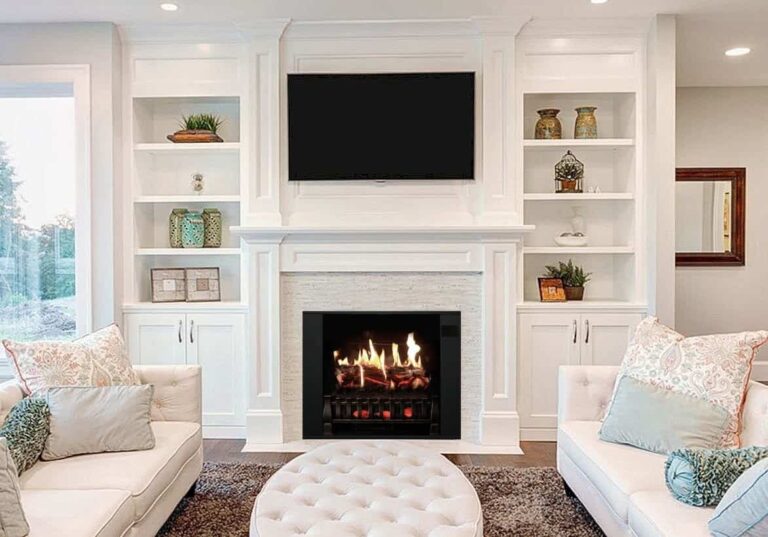
ᑕ❶ᑐ What To Consider Before Mounting A Tv Above Fireplace

Mounting Your Tv Above Fireplace

How To Safely Mount Your Tv Above The Fireplace

3 Tips For Installing A Tv Over Your Fireplace

Tv Above Gas Fire Houzz

Installing A Gas Fire And Fitting Tv Above Wall Units With Fireplace Modern

Mounting Your Tv Above Fireplace
Related Posts




